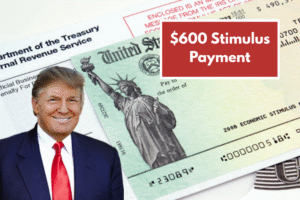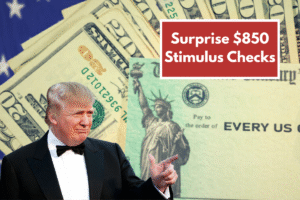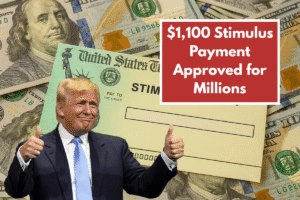A fresh wave of economic support is on its way with $300 stimulus checks now being distributed to millions of eligible Americans. Designed to provide temporary relief from rising everyday costs, these payments are being rolled out in phases, with many recipients already seeing deposits in their accounts. If you’re unsure about whether you’re included, now’s the time to find out.
Who Is Eligible for the $300 Stimulus?
The $300 stimulus is intended for low- to middle-income individuals and families. To qualify, single filers must have an adjusted gross income (AGI) of $50,000 or less, and joint filers must earn under $100,000 annually. Recipients of Social Security, disability benefits, SNAP, and veterans’ programs are also automatically included. Workers in gig jobs and part-time roles may qualify as well, provided they filed taxes last year.
Key Payment Dates to Know
Payments began processing this week, with direct deposits hitting accounts between the 25th and 31st of the month. Those receiving paper checks should expect delivery within 7–10 business days after processing. Officials advise monitoring your bank account or checking tools provided by the IRS and local agencies for updates. Payments are issued in waves, so not everyone will receive funds on the same day.
How to Confirm Your Status and Get Paid
To ensure you’re on the list, visit the IRS or your state’s official relief tracking website. You’ll need your Social Security number, birthdate, and filing status to use the “Get My Payment” tool. If you haven’t filed taxes or updated your direct deposit details recently, it’s essential to take action now to avoid delays. Non-filers may still apply using simplified forms available online.
Table: $300 Stimulus Check Overview
| Details | Information |
|---|---|
| Payment Amount | $300 |
| Individual Income Limit | $50,000 or less |
| Joint Filer Limit | $100,000 or less |
| Eligibility Groups | Low-income earners, SSA, SSI, Veterans |
| Delivery Method | Direct Deposit / Mailed Check |
| Start Date for Deposits | This Week (25th–31st) |
| Tracking Tool Available? | Yes – IRS & State Portals |
| Filing Required? | Only for non-filers |
The $300 stimulus checks offer timely relief for families and individuals navigating the rising cost of living. With payments already rolling out, eligible Americans should act swiftly to confirm their information and monitor their accounts. Whether it’s a boost for rent, groceries, or transportation, this check can ease the burden during difficult financial times. Don’t wait—check your eligibility and get your payment.
FAQ’s:
1. Is this $300 payment a one-time check?
Yes, this is a one-time payment designed for immediate relief, not a recurring benefit.
2. Do I need to file taxes to get this payment?
Only if you are a non-filer who hasn’t registered previously. Most who filed taxes in 2022 or 2023 will get it automatically.
3. Can I receive the payment if I’m on Social Security?
Yes, beneficiaries of Social Security, SSDI, and SSI are included and will receive the payment automatically.
4. What happens if my bank account has changed?
Update your banking info through the IRS portal immediately to avoid mailed delays.
5. Will this payment affect my other government benefits?
No, the stimulus check is non-taxable and does not count against benefit eligibility for programs like SNAP or Medicaid.




